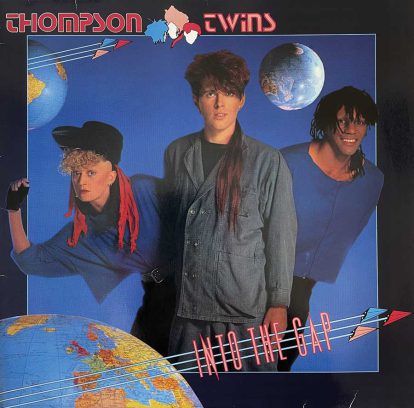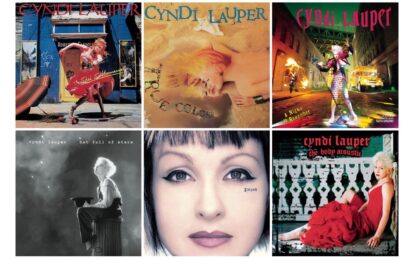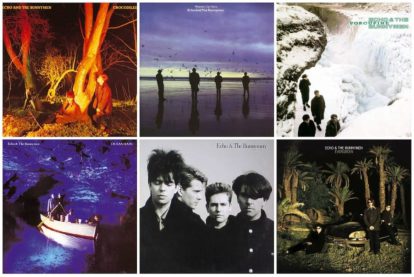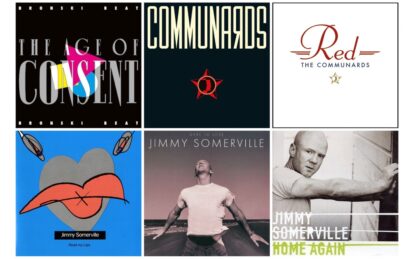We put the immaculate career of Madonna under the Classic Pop microscope…
Madonna, 1983
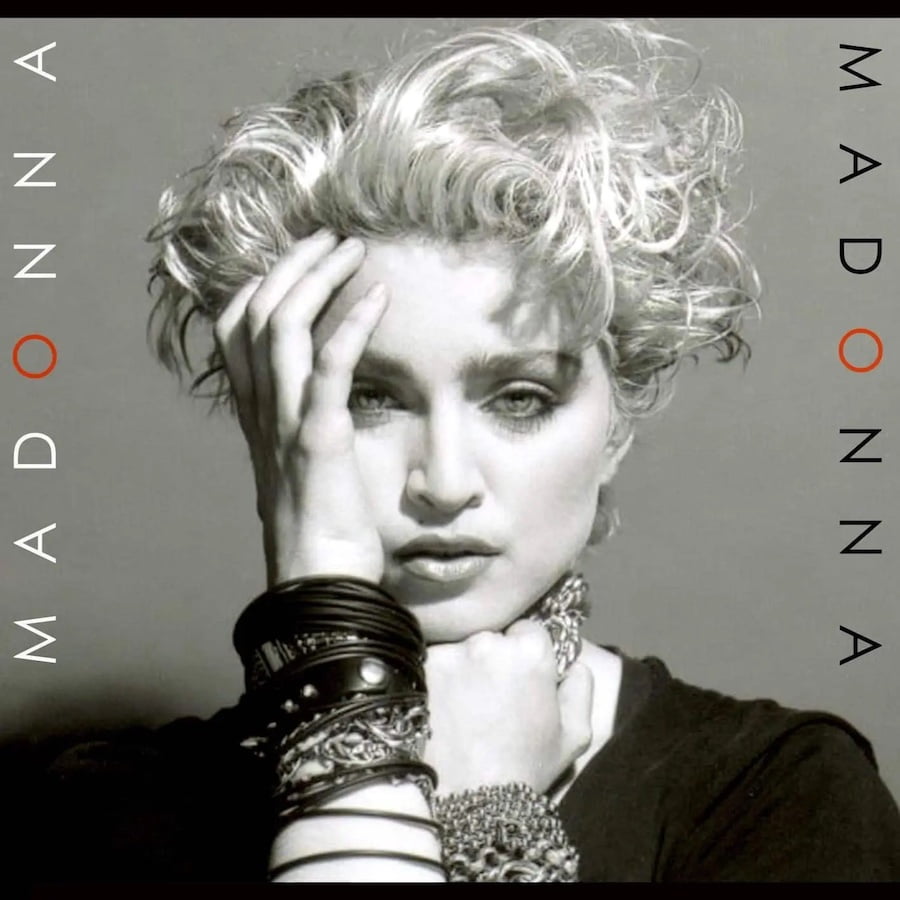
Madonna albums – Madonna
The ‘Disco Sucks’ movement’s culmination with a ceremonial burning of records in 1979 may have been intended to sound the death knell to the much-derided genre, but in reality, the glitterball kept on spinning and dance-pop rose phoenix-like from the ashes.
It mutated into a myriad of sub-genres, with perhaps the greatest purveyor of disco’s rebrand also embarking on her own musical journey.
Madonna had arrived in New York from her native Detroit to study dance, auditioning for everything from Broadway chorus lines to the Fame TV series, before an opportunity to spend six months in Paris as a backup dancer and singer for disco sensation Patrick Hernandez proved to be a detour in more ways than one.
While dance had previously been her focus, it was with Hernandez that she found her voice – literally, switching her attention to music.
Back in the Big Apple, a stint fronting Pretenders-esque pop/punk bands soon dissipated as the call of New York’s nocturnal playground transformed this New Wave artist into a queen of the clubs.
Madonna’s demo was hustled into the hands of New York DJ and A&R man, Danceteria’s Mark Kamins, who orchestrated a meeting with Sire Records’ Seymour Stein who signed her on the spot.
Elated to have penned a record deal, Madonna’s first experience in the studio failed to live up to her expectations – esteemed producer Reggie Lucas was reluctant to accept her input on this debut LP due to her inexperience.
Furious that her ideas weren’t welcomed, the pair frequently clashed in the studio, with Madonna going so far as to remix some tracks with her boyfriend, DJ John ‘Jellybean’ Benitez to make them sound less like Stephanie Mills and Phyllis Hyman, Lucas’ recent successes.
Despite the friction, Madonna is a sparkling slice of R&B-driven dance-pop, rooted in New York’s club scene.
From the dirty bassline of debut single Everybody to the carefree Holiday, infectious earworm Lucky Star to raunchy punk-funk of Burning Up, the album is relentless in its command of the dancefloor.
However, it’s a pair of Reggie Lucas tracks that stand out. Borderline is a stunning pop song elevated by Madonna’s longing vocal while the pulsating Physical Attraction hints at the sensuality she would later perfect.
Released in September 1983 in the US, sales climbed as Madonna’s star rose, peaking at No.8 having shifted three million copies.
It reached No.37 in the UK before its reissue as The First Album sent it to No.6. It has now sold over 10 million worldwide.
- Read more: The rise of Madonna
- Read more: Classic Album: Madonna – Madonna
Like A Virgin, 1984
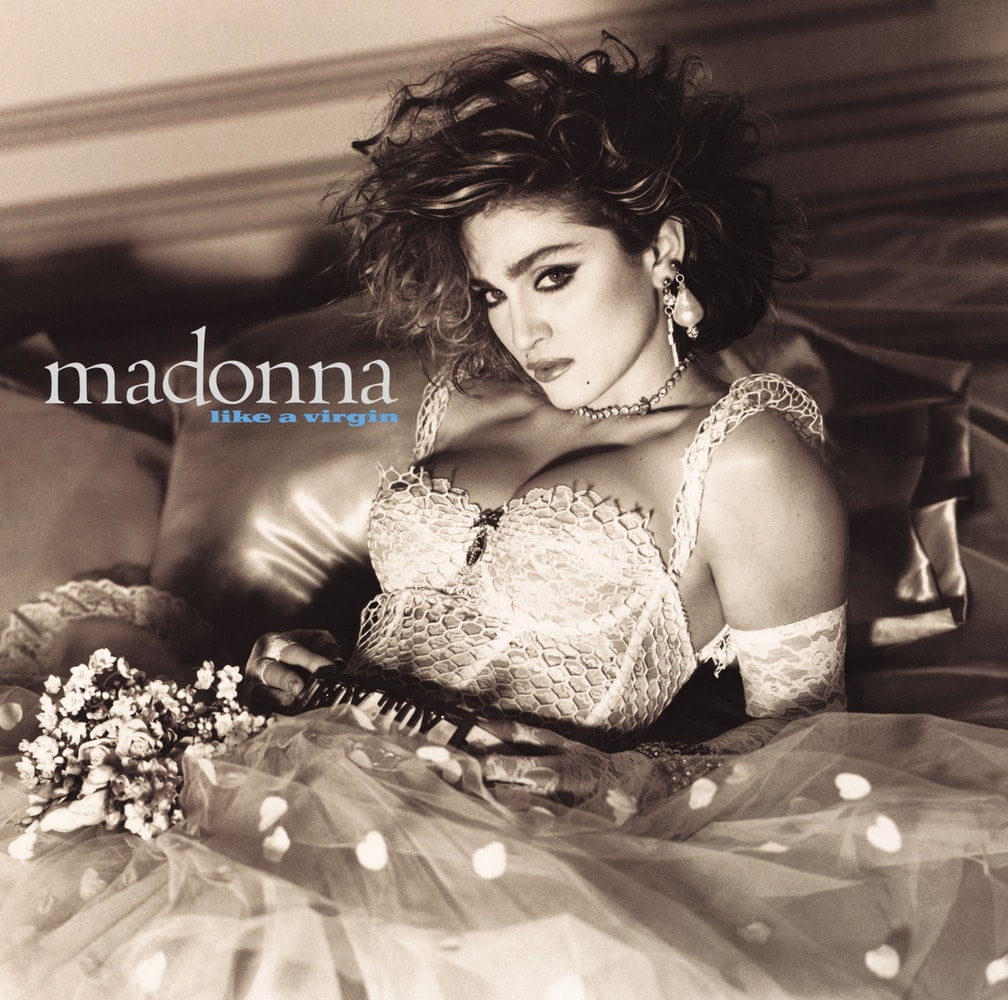
Madonna albums – Like A Virgin
Although her debut LP undoubtedly put her on the map, Madonna felt it had barely scratched the surface of what she was capable of.
Its success had been soured by how unfulfilling the creative process had been and she vowed to be more hands-on in the future by expressing her desire to self-produce the album – a suggestion vetoed by her label.
Citing the creative freedom afforded to labelmate Prince, who was lauded for having written, produced and arranged his material as an example of misogyny and double standards, she was appeased by being allowed her choice of producer.
Enticed by his versatility from the soulful, funky stylings of his Chic and Sister Sledge records as well as the pop sound of his recent work with Duran Duran, David Bowie and INXS, Madonna felt Nile Rodgers would be the perfect auteur for an album that she intended to be more eclectic than its predecessor.
As well as Rodgers, she struck gold as he brought the musicians from the Chic Organisation to play on the album. The contributions of bassist Bernard Edwards and drummer Tony Thompson are integral to the LP’s expansive sound.
Brash, bold and bouncy, Like A Virgin is dominated by the title track and Material Girl, two songs that have become signature hits and pop classics.
Outside of those behemoths, the album’s other two big hits, Angel and Dress You Up are often unfairly overlooked despite being just as strong – the latter in particular.
Over And Over, a New Wave-inspired ode to resilience is as close to a mantra Madonna had got at the time while Pretender and Stay are both catchy pop throwaways.
Shoo-Bee-Doo veers slightly too far into saccharine territory while a faithful cover of Rose Royce’s Love Don’t Live Here Anymore showcases Madonna’s ability to deliver a decent ballad.
Music aside, Madonna’s omnipresence on MTV and her first tour ensured that Like A Virgin was a commercial success well into 1985, racking up total sales of more than 21 million worldwide.
In the UK, the album topped the albums chart in September 1985 after it was re-released to include Into The Groove, Madonna’s first UK No.1 single and the first 7” she co-wrote and co-produced – vindication that when it came to her music, Madonna knew best.
- Read more: Making Madonna’s Like A Virgin
True Blue, 1986
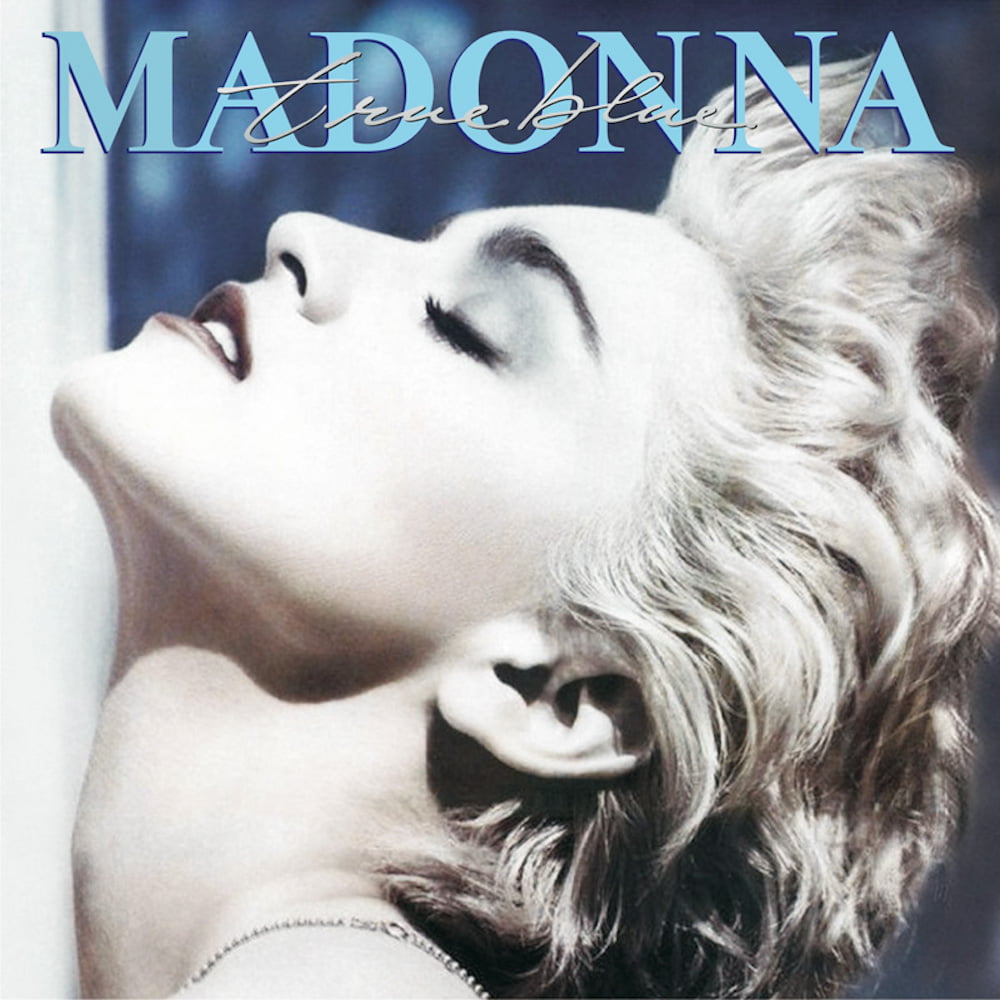
Madonna albums – True Blue
Loved up in La-La Land, Madonna had swapped Manhattan for Malibu in 1986 with new husband Sean Penn to devote time to her acting career. The result, Shanghai Surprise, bombed at the box office.
Fortunately she fared much better when it came to soundtracks, launching her third album with Live To Tell, the theme from Penn’s film At Close Range, a brooding ballad that showcased a maturity far beyond expectations.
With Madonna co-writing as well as co-producing every song with Stephen Bray and Pat Leonard, True Blue maintains that high standard, also marking a turning point for the singer vocally, with the use of her lower register lending a deeper emotional pull to performances as the pregnant teenager of Papa Don’t Preach and yearning lover of Open Your Heart.
Elsewhere, the giddy romanticism of the title track captures the newlywed’s state of mind at the time and the sun-kissed Spanish lilt of La Isla Bonita is a breezy delight.
White Heat encapsulates Hollywood’s classic gangster films while Where’s The Party is a burst of energy beckoning us back to the dancefloor.
With a bulletproof singles run, sales of more than 25 million and Herb Ritts’ iconic cover art, it’s little wonder True Blue is still her most commercially successful studio album.
Like A Prayer, 1989

Madonna albums – Like A Prayer
Despite 1988 being technically the only year since her breakthrough fans hadn’t had new Madonna music, her absence felt immeasurable given the relentless rate which she’d been scoring hits up to that point.
An influx of pop princesses vying for her throne – Kylie, Belinda, Taylor and Tiffany – did their bit to alleviate the tedium but, with only five new songs since 1986, the wait for new material felt like forever.
Since True Blue, Madonna’s tumultuous marriage to Sean Penn had come to an end and a stint on Broadway in David Mamet’s Speed-the-Plow proved to be yet another blow to her acting career, though the latter had taught her a valuable lesson – using her music as catharsis. Reteaming with Stephen Bray and Pat Leonard, Madonna turned her pain into art.
The stunning title track juxtaposes sexual and religious rapture with a soaring gospel climax while the sweet psychedelia of Dear Jessie is a charming lullaby to Pat Leonard’s daughter.
The agony and the ecstasy of marriage are explored on the haunting, country-tinged Till Death Do Us Part and in the giddy romanticism of the True Blue-esque Cherish.
Career highlight Express Yourself sees Madonna and Stephen Bray pay homage to their love of Sly & The Family Stone – one of two funk-filled tributes.
The other, Keep It Together, examines the importance of family, a prevalent theme on the album. Promise To Try, a heartbreaking piano-led ballad about the death of her mother is possibly the most vulnerable Madonna has ever allowed herself to be on record and Oh Father, a Simon & Garfunkel-influenced ballad, deals with rebellion against authority.
Madonna’s Spanish fixation continues on the grandiose Spanish Eyes while Love Song, the sparse duet with Prince, falls slightly short given the calibre of talent involved.
A critical and commercial smash, Like A Prayer is forever associated with the controversy surrounding the video for its title track and the associated Pepsi debacle.
Putting all of that aside, though, and judging it on merit alone, it remains a masterpiece.
- Read more: Classic Album: Madonna – Like A Prayer
Erotica, 1992
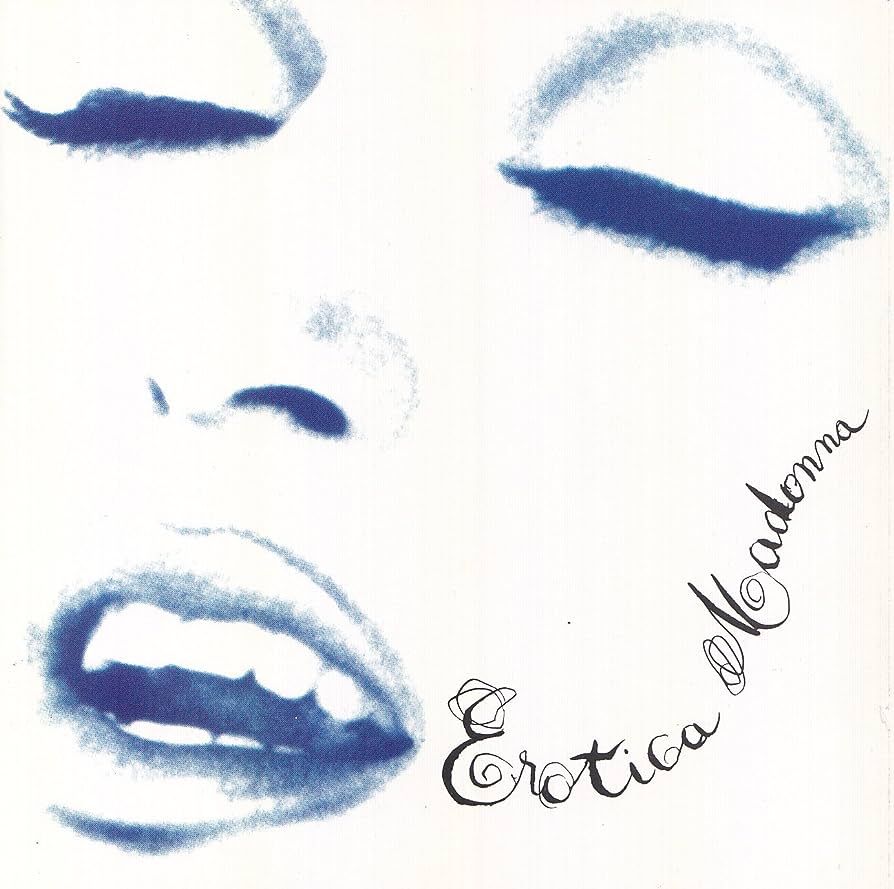
Madonna albums – Erotica
The 90s could not have got off to a better start for Madonna – both in terms of success and cultural impact. In the space of 18 months, she delivered Vogue, the Blond Ambition Tour, The Immaculate Collection, Justify My Love and the Truth Or Dare documentary as well as a showstopping Oscars performance.
While most artists achieving a similar level of success play it safe, with Madonna the opposite was true. Instead she chose to shine a light on causes she was passionate about, however taboo or controversial.
This culminated in the publication of her notorious coffee table book, Sex. While she explained the tome as an exploration of sexuality from a female perspective and a response against America’s puritanical opinions, it was dismissed as narcissism and exhibitionism, provoking a vicious backlash
Unfortunately, the concurrent release of Sex and Erotica meant the album was completely engulfed by the negative reaction to the book, leading to it becoming the most misunderstood record of her discography.
Those expecting aural sex were sure to feel short-changed when the only overtly sensual material turned out to be the title track and the tongue-in-cheek ode to “eating out”, Where Life Begins.
If Sex revealed Madonna literally naked, Erotica finds her emotionally naked, dealing with heartbreak, loss, jealousy and insecurity – all set to a sonic snapshot of early-90s New York.
It explores the city’s underbelly, jumping from the gritty hip-hop of Waiting to the vengeful house of Thief Of Hearts to the jazzmatazz of Secret Garden.
Produced by Madonna with Shep Pettibone and Andre Betts, Erotica is a much more personal collection than anticipated.
Bad Girl, Waiting and Words are all revealing admissions of vulnerability while In This Life is a hymn to friends lost to AIDS.
Elsewhere, Deeper And Deeper returns her to the Harlem drag balls for a glorious disco throwback, Rain is one the most beautiful ballads of her career and Why’s It So Hard is a militant call for acceptance for the LBGTQIA+ community.
Released amid the most controversial period of Madonna’s career, Erotica did suffer from the adverse publicity. But, with six million copies sold, it was far from the flop that her critics would have us believe.
Bedtime Stories, 1994
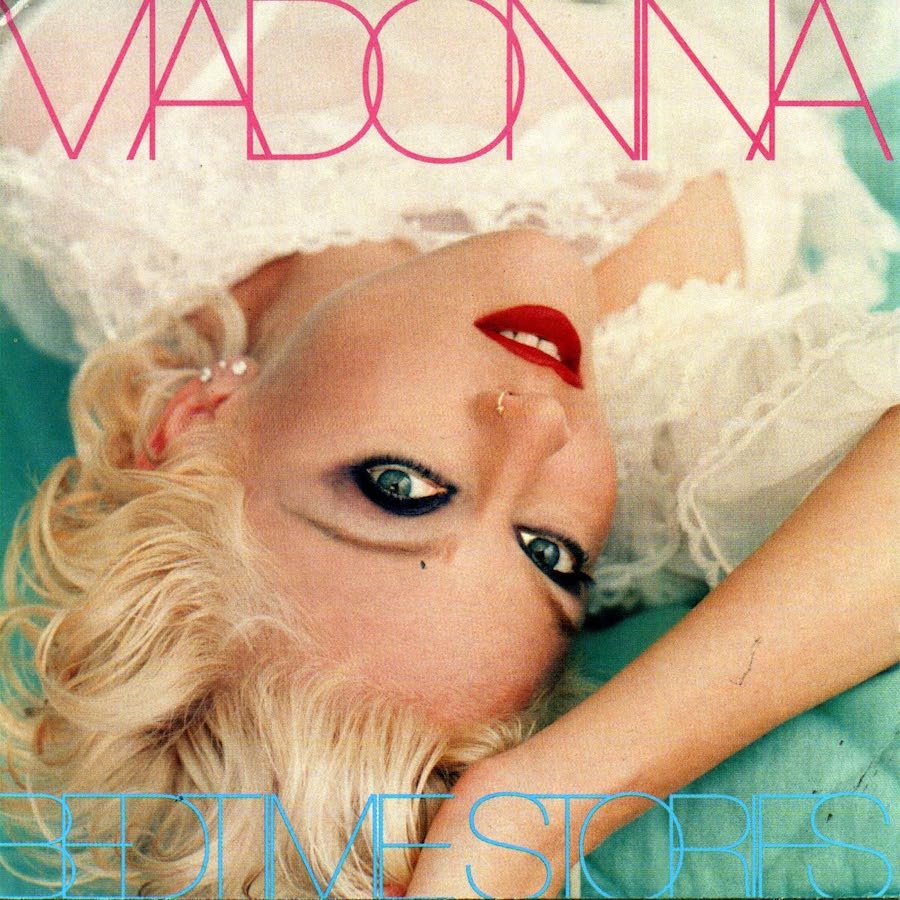
Madonna albums – Bedtime Stories
Feeling that the messages she was trying to convey were being lost in translation, Madonna retreated somewhat from sexual politics for her sixth studio album.
Bedtime Stories, despite the misleading title, eschews the frank sexuality of its predecessor and is instead like a warm fluffy blanket after the harsh, abrasive sounds of Erotica.
A collaboration with those making her favourite music at the time, Kenneth ‘Babyface’ Edmonds, Dave Hall, Dallas Austin and Nellee Hooper, the LP possesses a slick cohesion, bathed in lush R&B production and soft-focus balladry with the main themes being love, loss and heartbreak with a few exceptions.
Survival and Human Nature both address the backlash she’d recently suffered, while Sanctuary and the Björk co-penned Bedtime Story hint at the sounds Madonna would explore on Ray Of Light.
Album closer Take A Bow, a duet with Babyface, put her back in favour with the US public, spending seven weeks at No.1 – her longest run at the summit, while in the UK, it was her first single in a decade to miss the Top 10.
A stunning collection of R&B-infused pop, this is one of Madonna’s most inviting works and despite selling eight million, it’s unfairly overlooked in discussions of her best work.
Ray Of Light, 1998
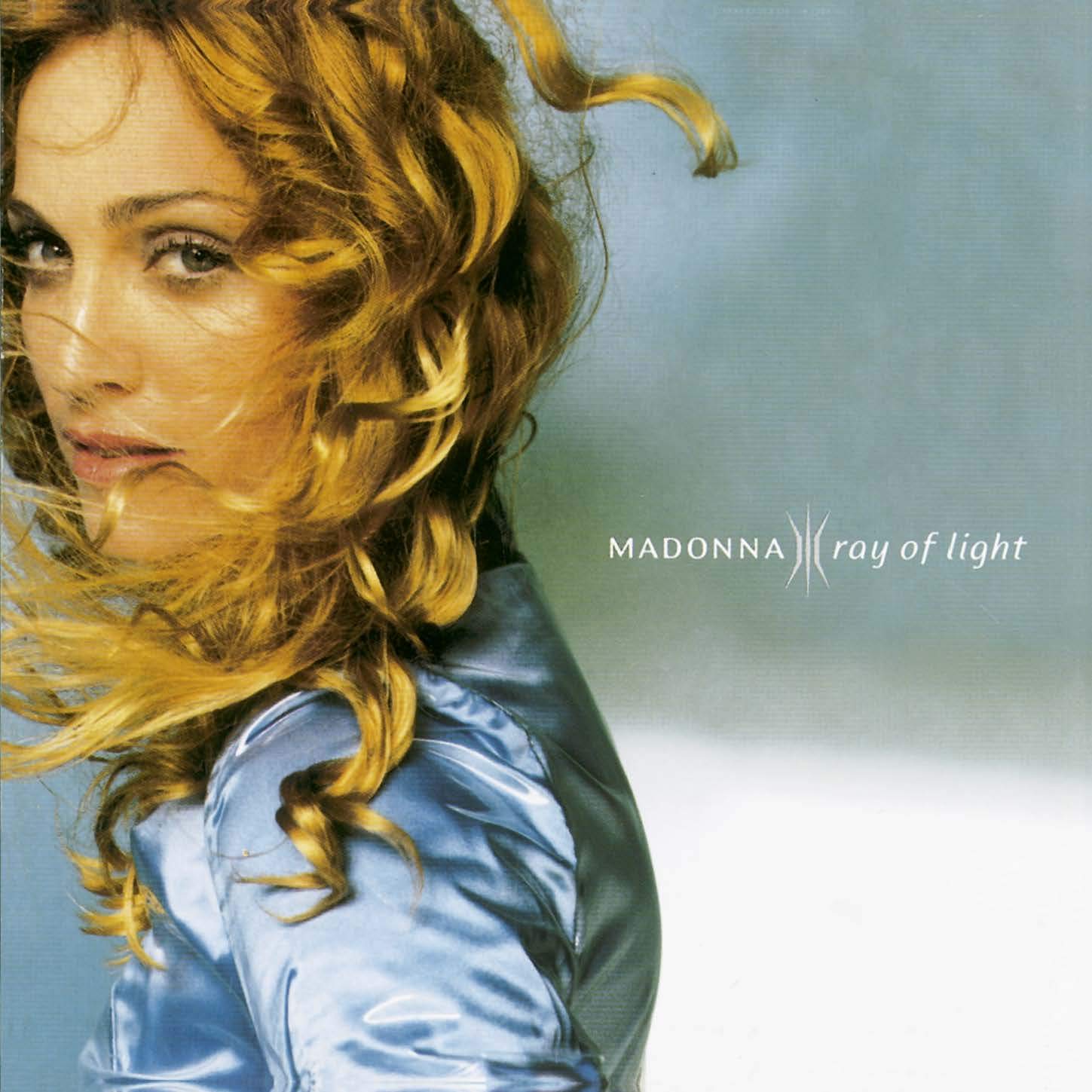
Madonna albums – Ray Of Light
To say Madonna’s life had changed in the second half of the 90s would be a huge understatement.
She’d won acclaim for her starring role in Evita, began studying Kabbalah – a branch of Jewish mysticism – had begun practicing Ashtanga yoga and, most significantly, given birth to her daughter Lola. These four factors had, she said, taught her valuable life lessons that she wanted to share.
Choosing spirituality and soul-searching as the themes she wanted to explore here, Madonna was experimenting with different genres – including R&B again, when she heard William Orbit’s latest Strange Cargo album, which completely redefined the direction of this record.
She’d been inspired by the likes of Portishead, Tricky, Björk and Everything But The Girl – electronic records which were also emotive and Orbit’s dreamy, bubbling soundscapes were the perfect accompaniment for what she had to say.
The result was Madonna’s most experimental set of songs to date. From the opening Drowned World/Substitute For Love on which she denounces her vacuous past self over a trippy soundscape, to the glacial majesty of Frozen, the euphoric trance of Sky Fits Heaven and pounding Skin, each track revels in its eclectic splendour.
Mer Girl is a haunting stream of consciousness song about death and grief, Swim warns of societal ills, while The Power Of Good-Bye is a beautiful send-off.
The title track, with its folky guitar riff and thumping beat is a burst of sunshine and Little Star, an ode to her daughter, is the gentlest drum’n’bass track you’ll ever hear.
Meanwhile, the swirling psychedelia of Candy Perfume Girl and lilting bossa nova of To Have And Not To Hold are rather lovely and Shanti/Ashtangi is a series of Sanskrit prayers which incorporate all of the themes explored on the album.
Madonna’s electronic excursion earned the singer some of the best reviews of her career and even won the Recording Academy round who awarded her the first major Grammys of her career.
With five hit singles and eventual sales of more than 16 million copies, Ray Of Light was an undisputed triumph.
- Read more: Madonna: The Second Coming
Music, 2000
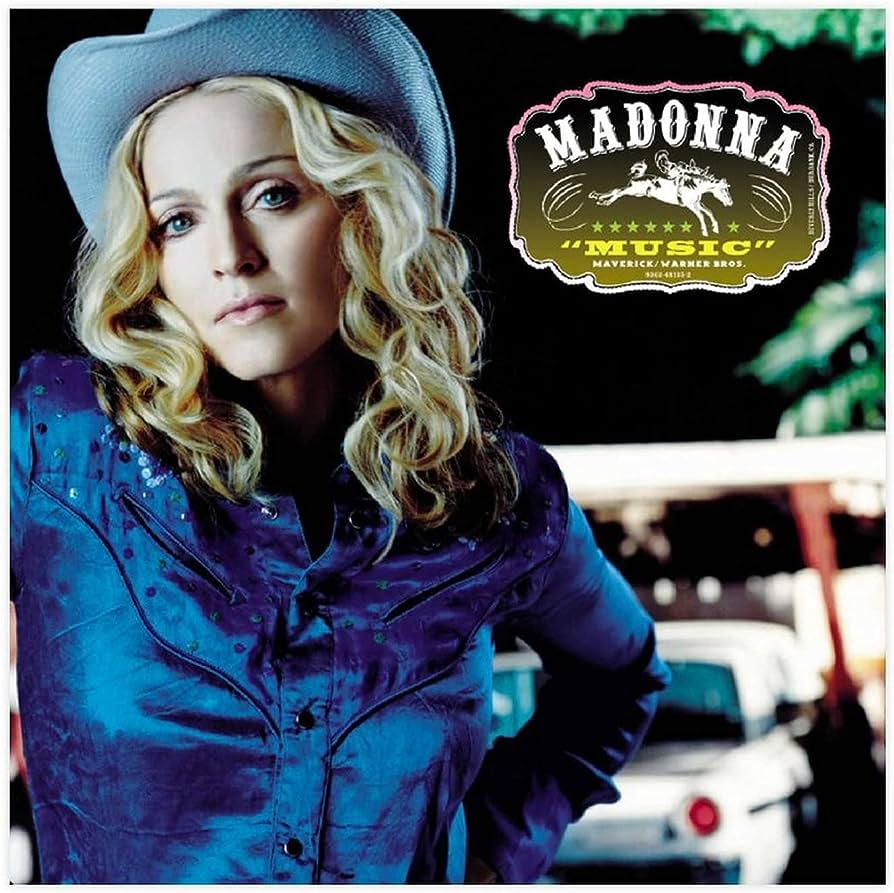
Madonna albums – Music
Still on a creative hot streak from the career-rejuvenating Ray Of Light era, Madonna was keen to work on new music after her touring plans were put on hold due to becoming pregnant with son Rocco.
Heading back into the studio with William Orbit, she was concerned that the music was sounding more like a continuation of Ray Of Light rather than an entity of its own and halted work as she wanted something completely different.
That arrived when a demo of Mirwais Ahmadzaï, a French artist whose work encompassed electronica, funk and rock, arrived at the offices of Madonna’s Maverick label.
Floored by the level of creativity exhibited in his music, Madonna immediately asked him to work on her next record.
Although progress was initially slow due to the language barrier, his manager acted as translator and they soon developed a method of communication, which enabled their creativity to flow.
The resulting album, a concise set which fuses electronica, Americana, country, dance and 60s psychedelia is far removed from the dreamy soundscapes of its predecessor with crunchy beats, funky bass and acoustic strumming vying for prominence.
The title track is essentially her debut single Everybody fed through a futuristic filter, from its vibe to its BPM, while Impressive Instant ups the ante with its whirling effects and heavily processed vocals.
The folktronica sound of Don’t Tell Me, a collaboration with Madonna’s brother-in-law Joe Henry, is a standout and she wisely went on explore this sound further on her American Life album.
Stripped largely of the effects, acoustic tracks I Deserve It and Gone are stunning Americana-inspired ballads that showcase Madonna’s voice in its rawest form.
Paradise (Not For Me), Madonna and Mirwais’ first work together, is repurposed from his own Production album and Nobody’s Perfect is a mournful vocodered delight.
The William Orbit-esque bubbles-and-bleeps of Runaway Lover and Beautiful Stranger-retread Amazing prove Madonna was right to move on from that sound.
Shifting over 11 million copies, Music was a transatlantic chart-topper, Madonna’s first US No.1 album in over a decade.
American Life, 2003
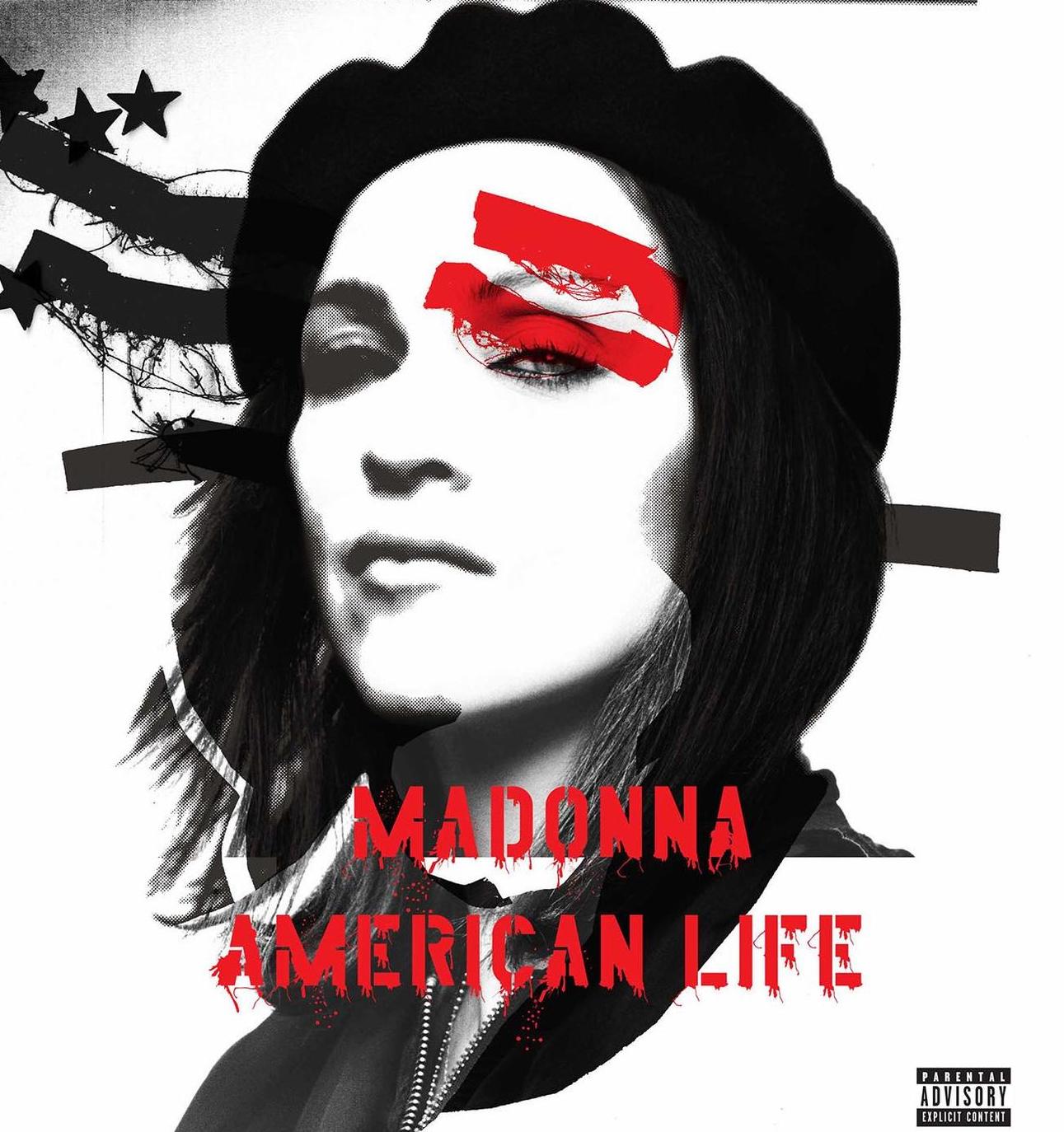
Madonna albums – American Life
Whether it was the graphic anti-war video for the title track, withdrawn at the eleventh hour by Madonna after a backlash prompted death threats to her and her children, or her tongue-in-cheek rap, American Life suffered a similar fate to Erotica in that some of her strongest work was buried under the weight of controversy.
An extension of ideas first explored on Music, this treads similar ground as to its predecessor – folk-inflected electronica and punchy dance.
Mother And Father teams a childhood confessional with an evocation of Mirwais’ own Disco Science, with Nobody Knows Me challenging the public’s perception of its creator.
Despite its reputation as an abrasive, political statement, American Life’s true strength lies in a salvo of ballads that rank among Madonna’s very best.
The stripped-back X-Static Process and alt-rock leaning Intervention are both beautiful in their simplicity, as is Nothing Fails, which builds to a crescendo with the help of a gospel choir.
The album ends on a similar high with Easy Ride, a dramatic amalgamation of stuttering electro and strings.
Though its sales fell short of its predecessors, American Life solidified Madonna’s rapport with Mirwais, daring to be more experimental, more intimate, more honest.
An overlooked treasure.
Confessions On A Dance Floor, 2005
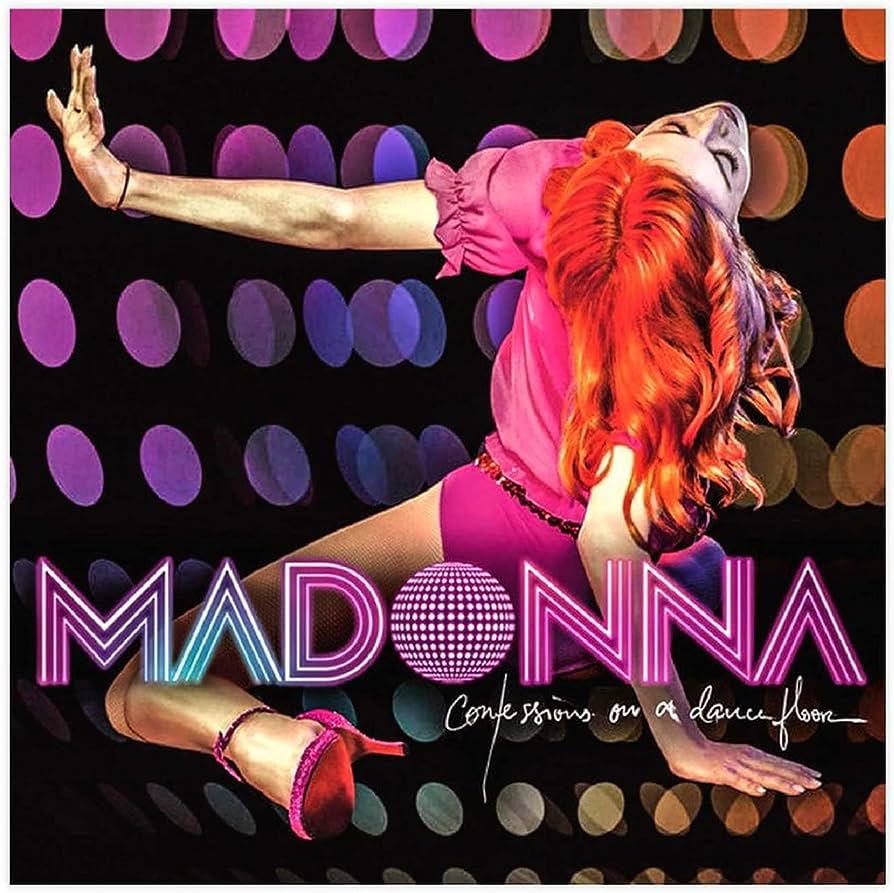
Madonna albums – Confessions On A Dance Floor
After the heavy subject matter of her previous few records, Madonna’s return in 2005 with an immaculately produced set of dancefloor-ready gems was met with a rapturous welcome from fans.
Mirroring Kylie’s resurgence a few years earlier, the gargantuan success of Madonna’s return with a pounding floor-filler rooted in disco – the ABBA-sampling Hung Up – was, for those that had lost interest during her more serious moments, like welcoming back a long-lost friend.
Fortunately, there was plenty more where that came from and the album’s love of dance music never falters, from the Moroder-esque marvel Future Lovers and Balearic bliss of Get Together to the Daft Punk robotic funk of Forbidden Love.
Jump finds Madonna firmly in West End Girls mode (listen to that intro) and the bassline of the stomping Sorry evokes The Jacksons’ epic Can You Feel It.
Taking its title from the combination of upbeat dance music with meaningful lyrics, the album revisit themes frequently explored by Madonna.
On How High she questions the price of fame à la Drowned World and Like It Or Not is a riposte to her critics.
As on previous LPs, Madonna originally began working with Mirwais but abandoned that when the music was not the departure she wanted and switched to producer Stuart Price instead.
They already had a working relationship after he’d been Musical Director on her previous two tours and displayed an understanding of her back catalogue with his reworkings of her older material.
He was also a successful DJ and his music as Les Rythmes Digitales and Zoot Woman possessed the energy Madonna wanted for her album.
Mostly recorded in Price’s home studio, it embodies a fun, carefree vibe that’s intended to evoke one of his DJ sets both in energy and structure, hence the songs are sequenced as a continuous mix.
Topping the charts in more than 40 countries and selling over 10 million, Confessions… reinstated Madonna as queen of the clubs.
Hard Candy, 2008
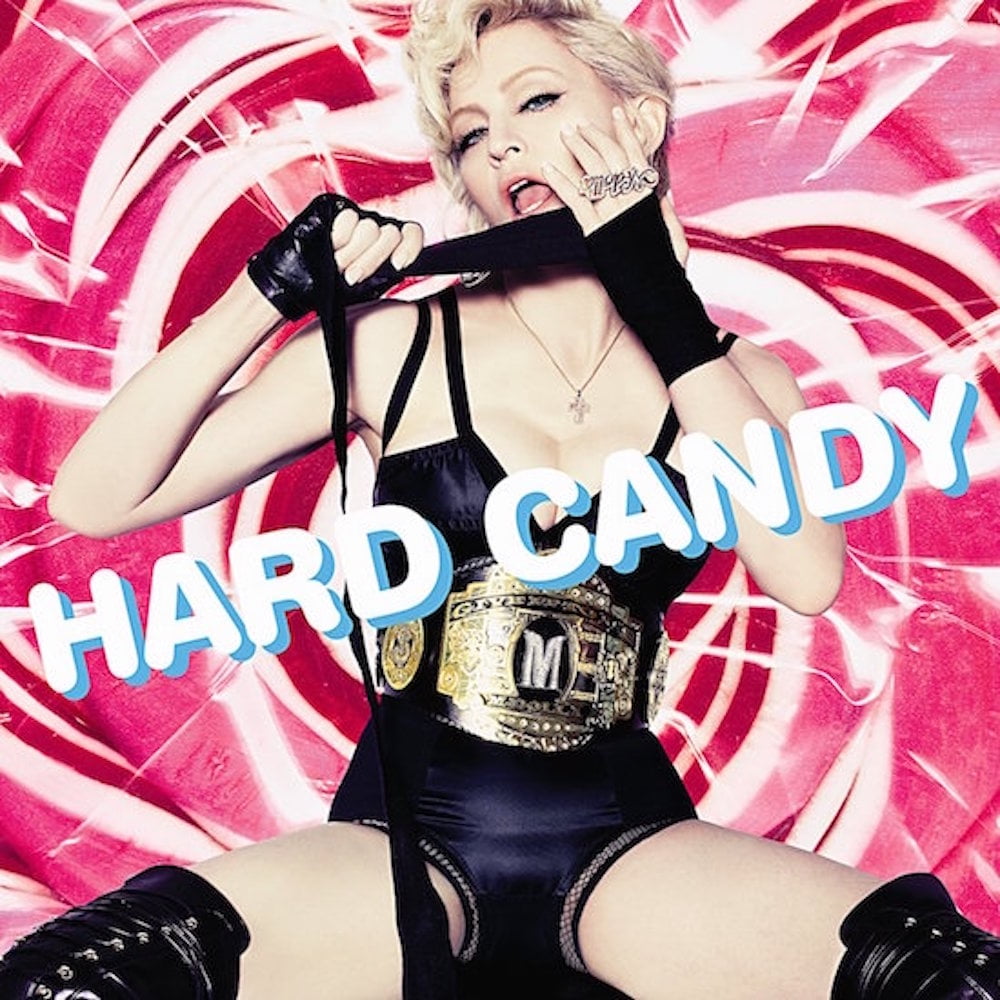
Madonna albums – Hard Candy
Having developed a kinship with European talent on her previous three albums, Hard Candy saw Madonna collaborate with proven US hitmakers for the first time since Bedtime Stories, again tapping into contemporary R&B for a harder, groove-based sound.
Aided by men-of-the-moment, Pharrell Williams, Timbaland, Danja and Justin Timberlake, Hard Candy is undeniably a well-crafted, fun pop album with R&B beats and slick production.
The biggest criticism was that it saw Madonna incorporate a sound already popular with artists such as Gwen Stefani or Nelly Furtado rather than something new.
This accusation is most evident on the Timberland/Timberlake contributions, which suffer from being derivative of their own output.
By contrast, the Pharrell tracks, notably Give It 2 Me (the closest to a Madonna classic), the funky and catty She’s Not Me, breezy Beat Goes On and infectious Heartbeat deliver on the brief of creating contemporary modern hip-pop with a nod to Madonna’s club roots.
Her final album with Warners, it also featured her last UK No.1 single, 4 Minutes.
MDNA, 2012
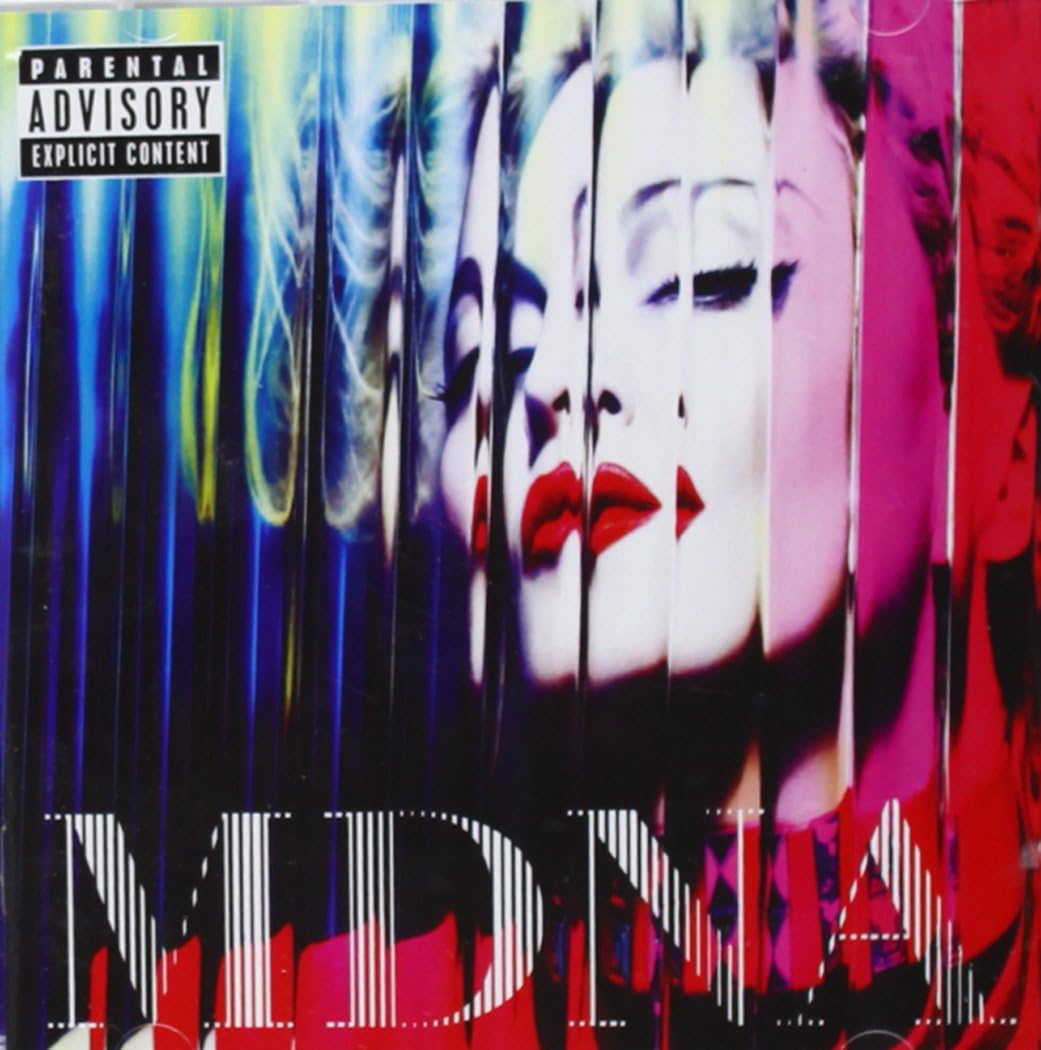
Madonna albums – MDNA
While life-changing circumstances such as divorce and parenthood had been the impetus for some of Madonna’s greatest work in the past, unfortunately the same could not be said for her first artistic statement since her divorce from Guy Ritchie.
Though that event looms large over cuts such as Love Spent, I Don’t Give A and Gang Bang, MDNA is ultimately a mixed bag – both stylistically and in terms of quality.
Rushed and lacking focus due to Madonna directing her film, W.E., at the time, tracks such as Masterpiece, Falling Free and I’m Addicted prove the spark was still there, but unfortunately on MDNA it just didn’t ignite.
A decent chunk of the other material, which ranges from generic dance fluff like Turn Up The Radio or the lacklustre lead single Give Me All Your Luvin’ – a gimmicky, surf-rock cheerleader chant designed for her Super Bowl halftime show – falls way short.
Even worse, are the anodyne Superstar and deluxe edition bonus cut B-Day Song, the latter an absolutely criminal waste of a guest appearance by M.I.A.
While by no means a bad album, MDNA remains a disappointing one knowing that Madonna is capable of so much more.
Rebel Heart, 2015
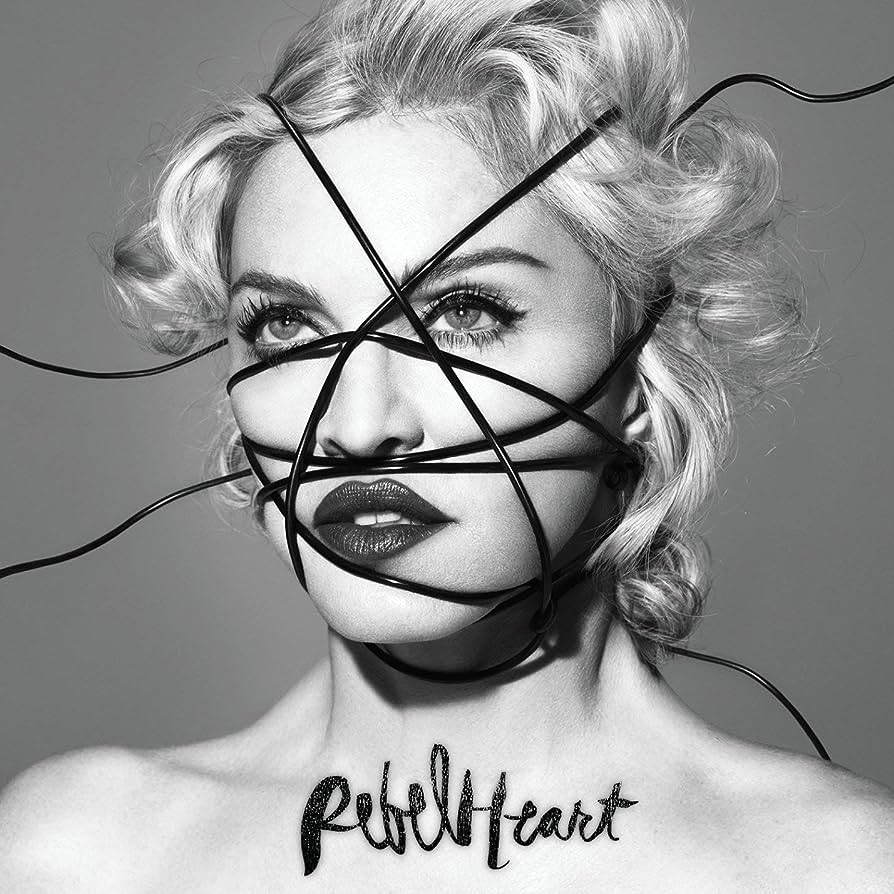
Madonna albums – Rebel Heart
\With Madonna so obviously heavily invested in her music again after the disappointing MDNA, it’s a shame that 2015’s Rebel Heart seemed blighted from an early stage.
Firstly, the demos were leaked, forcing Madonna to complete and rush-release six tracks months early with a pre-sale link, thwarting her concept of putting it out as a double album consisting of two sets – ‘Rebel’, the fun, dance-inspired material, and ‘Heart’, the deeper, more introspective songs.
Secondly, the LP’s eventual release was overshadowed by Madonna’s infamous fall onstage at The Brits.
Drama aside, Rebel Heart is stronger than its predecessor, covering multiple styles and influences which would have worked better had Madonna been able to realise her original vision.
The juxtaposition of rap, dubstep and reggaeton on Bitch I’m Madonna and Unapologetic Bitch next to tender moments such as Joan Of Arc and Inside Out is too jarring at times.
Featuring Diplo, Avicii and Kanye West, the lack of cohesion mirrors the chaotic creative process, with Madonna voicing her dismay that it was so unregimented due to everyone’s busy schedules.
Buried among some filler are many fantastic moments with Ghosttown as the standout. Despite Rebel Heart’s faults, an artist taking risks three decades into their career is worthy of applause.
Madame X, 2019

Madonna albums – Madame X
Much like Bowie’s Berlin period, Madonna was a stranger in a new town when her relocation to Lisbon became the impetus for one of her most creatively fertile periods.
Though the aforementioned Starman’s detour was to kick a voracious drug habit, Madonna’s reason for her move could not have been more different – it was so that her son David could train at a football academy there.
Though she joked that her move there was solely to be “a soccer mom”, it became a profoundly influential switch that spawned one of the most experimental and original works of her career, not to mention one of her very best.
Working once again with Mirwais, Mike Dean and Diplo, the cosmopolitan corpus veers from the superb slick balladry of Crave and Crazy to the eccentrically epic Dark Ballet.
Anti-gun disco jam God Control and the 90s house of I Don’t Search I Find cater to fans of the more dancefloor-friendly side of Madonna’s oeuvre.
The atmospheric Killers Who Are Partying slows the pace while traditional rhythms are interwoven with contemporary styles on Batuka and bonus track Extreme Occident.
The summer breeze of Medellín, featuring Maluma, is a worthy addition to the Spanish lullabies embroidered throughout Madonna’s body of work and the sparse electro and strings of deluxe edition songs Looking For Mercy and the anthemic I Rise, soar.
Describing her arrival in Lisbon as being similar to her move to New York four decades earlier in terms of its inspiring music and art scenes, the album’s other full circle moment is titular.
Madame X was a moniker first given to Madonna by her dance teacher Martha Graham on account of the student looking so different every time she saw her.
“I never know who you are,” Graham told her. It is a sentiment that was echoed by the world as one of pop’s foremost shapeshifters has enthralled us for 40 years and made her story so far such a thrilling and interesting one.
- Want more from Classic Pop magazine? Get a free digital issue when you sign up to our newsletter!
Classic Pop may earn commission from the links on this page, but we only feature products we think you will enjoy.


